
Feel free to add tags, names, dates or anything you are looking for

Kortskheli Church of the Mother of God is located in Village Kortskheli, region of Samegrelo. It was constructed between 1624 and 1639 on the initiative of Levan II Dadiani, Prince of Samegrelo, and his wife, Princess Nestan-Darejan, and donated to the Monastery of the Holy Cross in Jerusalem. It is a domed structure, faced with hewn blocks of greyish stone. It features three semi-cylindrical projections on the eastern side and a large arched gallery along its western façade. The church was painted immediately after its construction. Fragments of these murals remain visible in various parts of the interior.

Borjomi Central Park, formerly known as Mineral Waters Park, is situated in the narrow gorge of the Shavtskala (Borjomula) River. Its history is closely tied to that of the Borjomi spa itself. The spa and park were established in 1842. The park stretches linearly along the river, constrained by the steep, rocky slopes of the surrounding mountains. Originally, the mineral waters were used primarily for bathing purposes. It wasn’t until the late 19th century that Borjomi water gained popularity as a drinking source. Consequently, areas around the springs that had been occupied by bathing establishments were demolished during the Soviet era.
St. Nicholas Chruch in Batumi was founded between 1865 and 1871 by the Greek community of the city. It is a cross-domed structure built in the tradition of post-Byzantine architecture. In the 1890s, the church was extended westward, and a bell tower was added above the newly expanded western section.

The Vani Archaeological Museum of Georgian National Museum is the first archaeological museum in Georgia, founded in 1985 by Academician Otar Lordkipanidze. The museum is located in the ancient town of Vani, twenty-six kilometres from the city of Kutaisi. The archaeological excavations in Vani prove that the mythical land of Colchis truly existed. The museum’s oldest objects date back to the 8th - 7th centuries BCE, while the famous grave of the Colchian woman, where golden objects of immense significance were found, dates to the 6th to 4th centuries BCE. One of the highlights of the Vani Archaeological Museum is a statue of Nike, the Greek goddess of victory. This statue dates back to the 2nd to 1st centuries BCE, and is recognised as a treasure of immense cultural significance. It has been displayed in leading museums around the world. In 2023, Vani Archeological Museum of Georgian National Museum has received one of the prestigious, the Silletto Prize for Community Participation and Engagement.
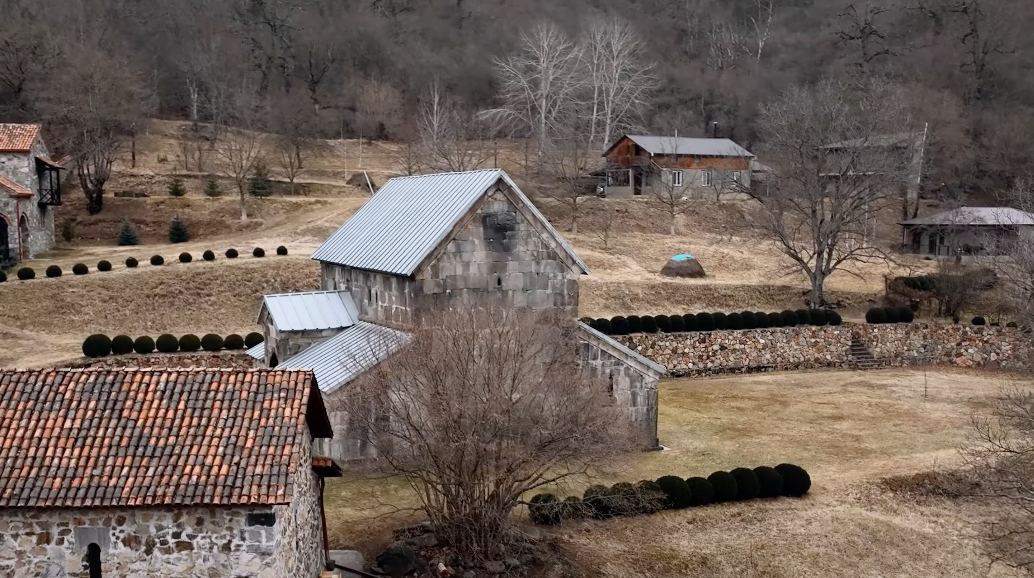
The medieval Monastery of the Mother of God is situated on the edge of the town of Bediani in Tsalka Municipality. The monastery’s main building is a well-preserved church standing at the center of the courtyard. Based on architectural evidence, it dates to the 15th century. Between 2007 and 2018, a refectory, circuit wall, and gate were restored, and a bell tower and new dwelling cells were built.
Kutaisi District Court was built between 1898 and 1900. Located at the end of present-day Newport Street, near the bank of the Rioni River, the court building plays a prominent role in the city’s urban landscape. The building was designed by Aleksander Szymkiewicz, a renowned Polish architect who worked in Georgia and was responsible for several significant projects. The Kutaisi Court of Appeals is a good example of nineteenth-century architectural eclecticism, blending elements from Renaissance and Baroque styles. Today, it houses the Kutaisi Court of Appeals.
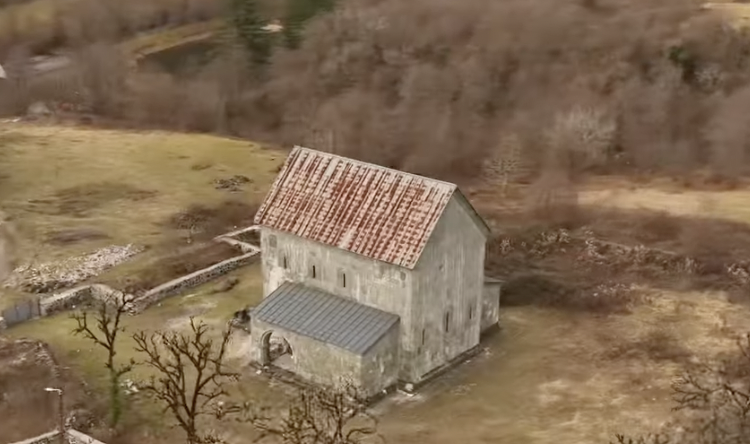
Skuri Church of the Transfiguration is located in the Samegrelo province. It stands in a small field surrounded by wooded mountains, harmonizing beautifully with its natural setting. The exact construction date of the church is unknown, but its architectural features suggest it was built in the XIII century. By the twentieth century, the church had fallen into a state of disrepair, with visible cracks and sections missing. In the 1970s, its vault and upper walls collapsed. However, in 2014, the church underwent a full restoration, excluding the western porch, with extensive use of its original stones. Music: სადავოი კირიალესა by Georgian Folk Ensemble Lashari
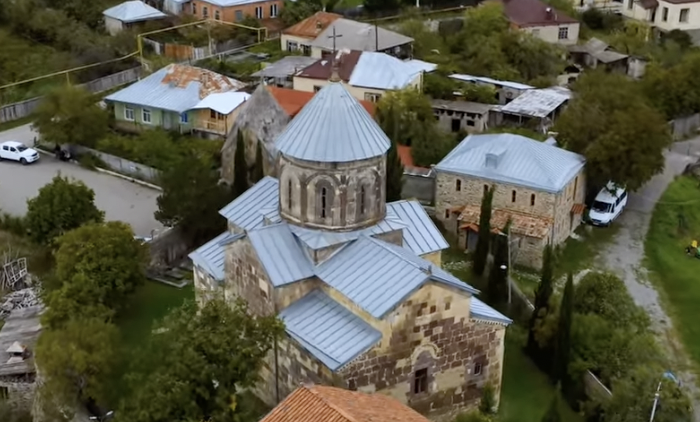
Nikozi Cathedral of the Savior is located in the center of the present-day village of Zemo Nikozi. In the late fifth century, King Vakhtang Gorgasali of Iberia (Eastern Georgia) established twelve new episcopal sees in his kingdom. One of these was Nikozi, where according to his chronicler, Vakhtang built a church “on the hearth of a fire-temple.” In the tenth century, the cathedral was renovated by Bishop Michael. In the eleventh century, a temple was installed in front of the sanctuary. Later on, the cathedral collapsed, and in the fifteenth century it was restored as a domed building. At present it is an inscribed-cross structure, with the dome resting on four free-standing piers. The irregular masonry and distorted decorative elements provide evidence of the decline of Georgian architecture in the fifteenth century. The cathedral was once again repaired in 1889. Music: Shen Khar Venakhi by Shvidkatsa
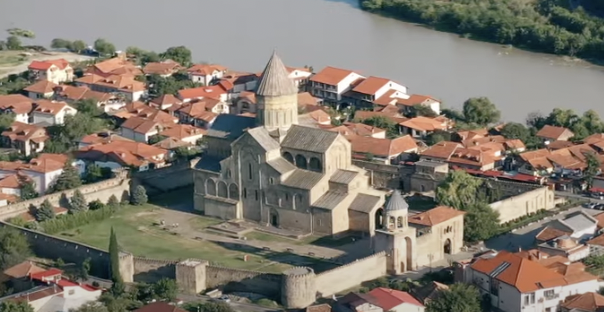
The Svetitskhoveli Cathedral in Mtskheta is Georgia’s most famous landmark. According to Georgian tradition, it stands on the burial site of the Christ's chiton. The first church was built here as early as 330 by the newly baptized King Mirian on the advice of St Nino, the Illuminatrix of Georgia. The name Svetitskhoveli means Life-Giving Pillar and derives from a wooden pillar standing in the church, which was believed to be miracle-working. In the 480s King Vakhtang Gorgasal replaced the first wooden church with a new one, a large three-nave basilica built of stone. Between 1010 and 1029, a new Svetitskhoveli Cathedral was built on the initiative of Catholicos Melchisedec I, by the architect Arsukisdze.

Martvili is one of the most sacred sites in Georgia. According to tradition, St Andrew the Apostle cut down an oak worshiped by the pagans on this site and, after they had converted to Christianity, founded a church, the altar of which stood on the roots of the felled oak. In the early Middle Ages, Martvili became a renowned monastery and, from the tenth century, also a Bishop’s See. The main church of the monastery, which serves as a cathedral, is dedicated to the Dormition of the Mother of God. It was built in the seventh century as a free copy of the Jvari Church at Mtskheta. Music - “Holy God” performed by Zarzma choir
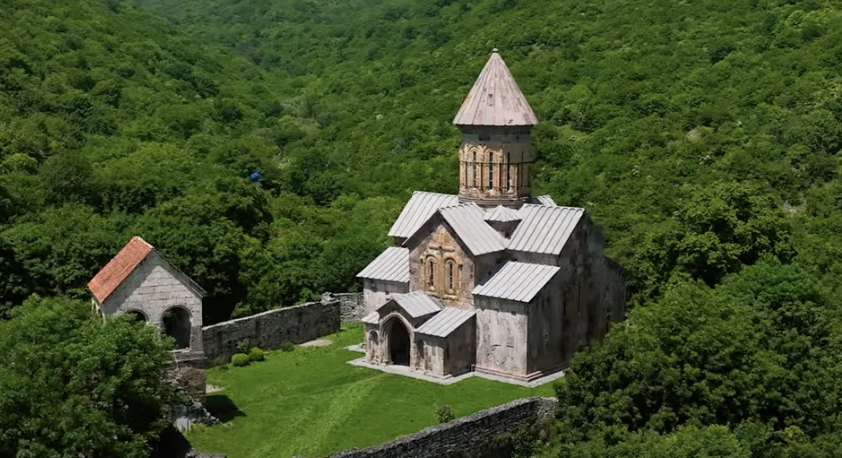
Pitareti Monastery was founded during the reign of King George IV, also known as Lasha-Giorgi (1213-1222), son of the celebrated Queen Tamar. It is set among the mountains in a picturesque ravine, 25 km south-west of the town of Tetritsqaro in Kvemo Kartli Province. The monastic complex comprises the Church of the Mother of God, a bell tower, the ruins of subsidiary buildings, and a circuit wall. Music by Shvidkatsa Official - მას საქართველო ჰქვია

Ikalto Monastery is located in the Kakheti region, 10 km from the city of Telavi. It was founded in the sixth century by Zenon, a monk from the “Thirteen Assyrian Fathers”. In the early Middle Ages, Ikalto was one of the largest monasteries in eastern Georgia. It is believed that in the 1120s, the eminent churchman and theologian Arsen of Ikalto (Ikaltoeli) established an academy there, which functioned until the late Middle Ages. Music by Quintet Urmuli - კვინტეტი ურმული - ნარნარი/ Narnari
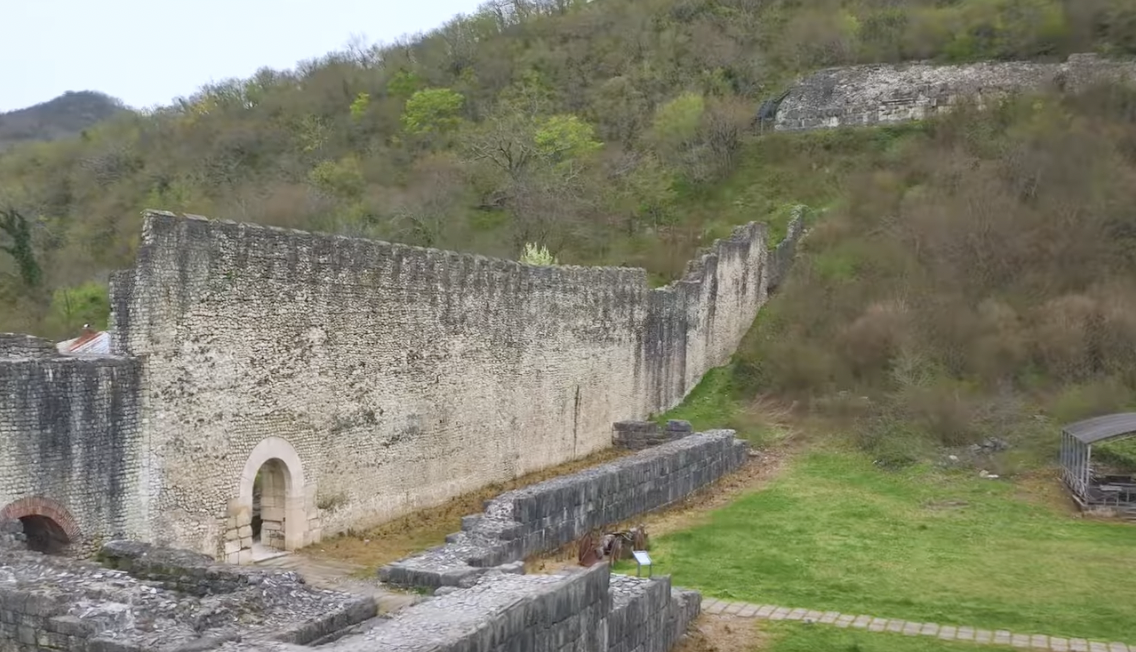
This archaeological site, located near the village of Nokalakevi in the Samegrelo province, boasts a rich history dating back to Antiquity. Ancient Archaeopolis comprised a lower city and a citadel, both interconnected by defensive walls. Along with the huge fortification walls, with the main gate in the middle, the lower city preserves the ruins of palaces, baths, barracks, and three churches, two of which survive at ground level only, while the third was restored in the Middle Ages. Music by - Abkhaz State Song Ensemble Shavnabada • შავნაბადა - ჩელა/Chela
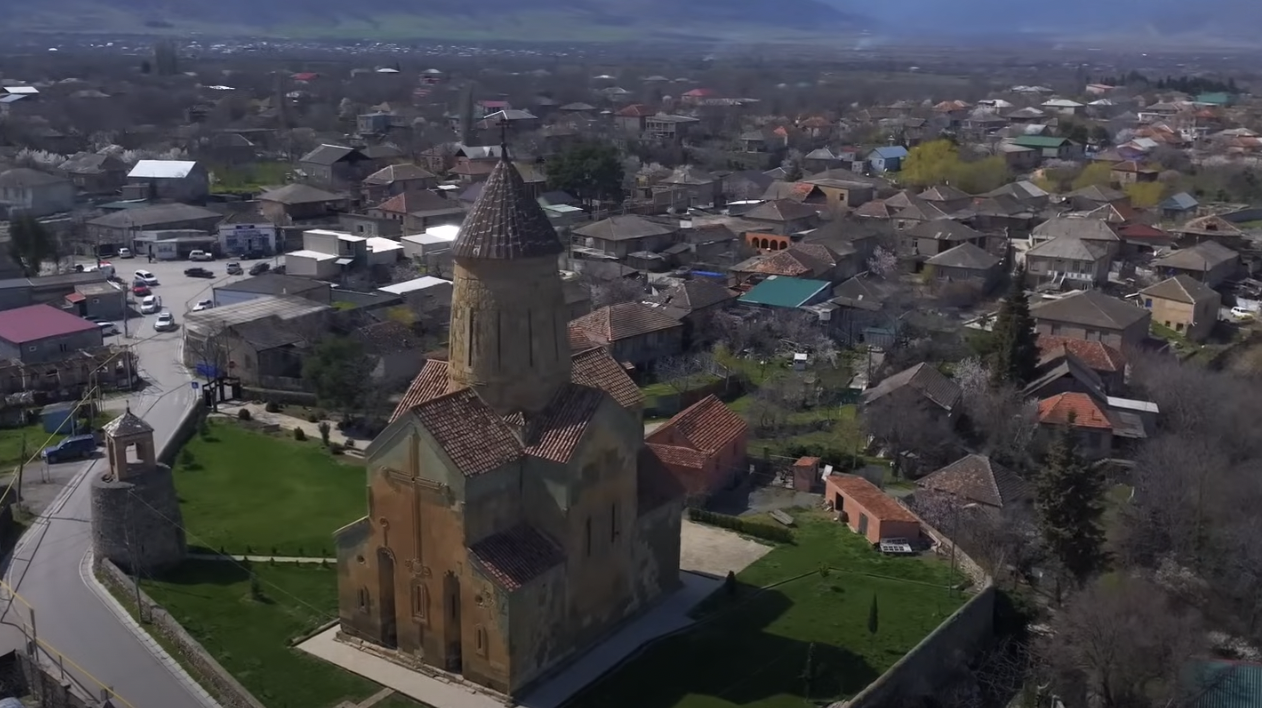
The Church of the Mother of God is located in the village of Metekhi, in Kartli Province. Legend attributes its foundation to the fifth-century Georgian king Vakhtang Gorgasali. Based on archeological proofs the extant church was built in the first half of the thirteenth century and restored several times in the late Middle Ages and Modern times. Music by - Abkhaz State Song Ensemble Shavnabada - ბინდისფერია სოფელი

Pudznari Church of the Mother of God is located near the village of Bodavi. It stands on a flat location at the bottom of a hill, in the center of an enclosed courtyard. The church is built of mixed materials – part jagged stone, and part well-hewn travertine blocks. It is a cross-domed structure with a rectangular plan. Unlike other contemporaneous Georgian churches, Pudznari Church displays modest exterior decoration. The façades bear no sculptural adornment, since the facing material is unsuitable for carving. Special thanks for musical contribution to New banas choir | ახალი ბანას გუნდი - to the composition - “More than three thousand years” “სამიათას წელზე მეტი”
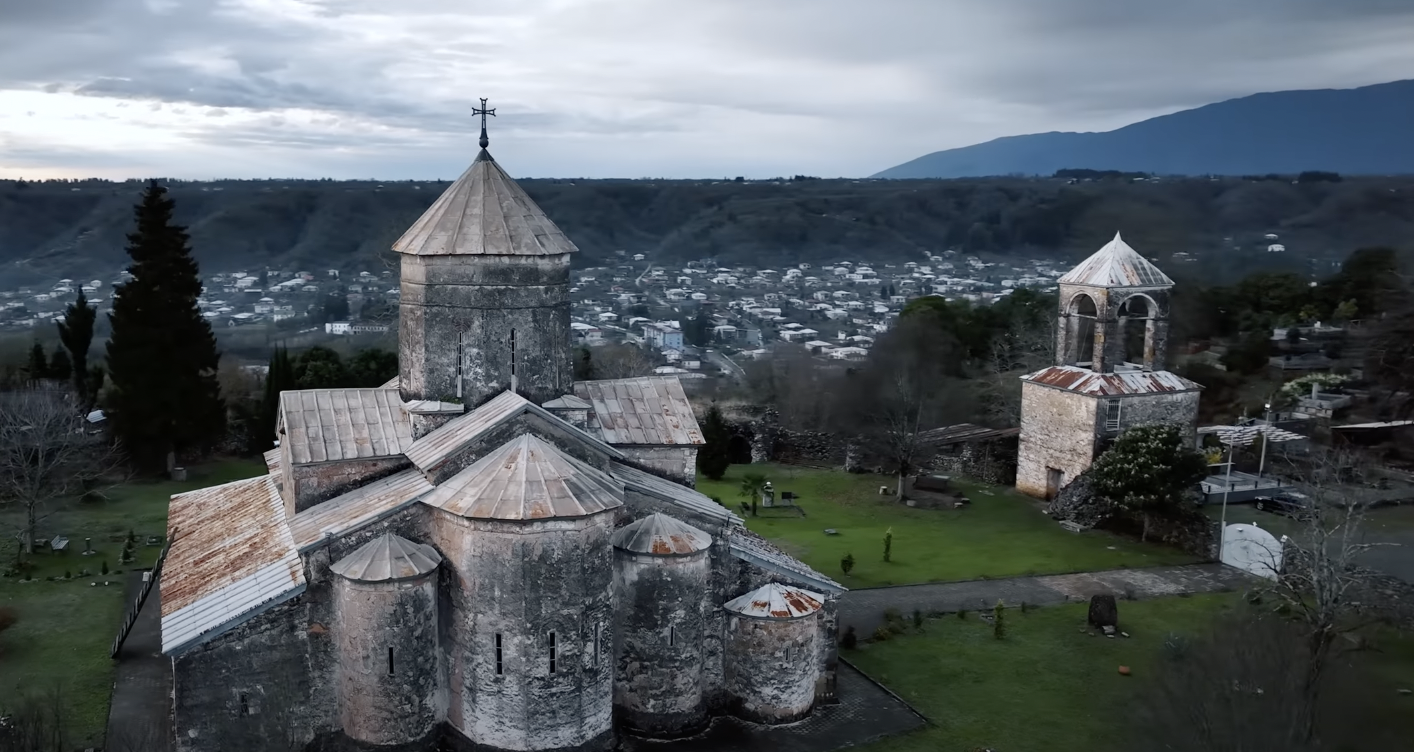
TSALENJIKHA church of the Savior was built in the middle or second half of the twelfth century. It is located near the town of Tsalenjikha in the historic province of Samegrelo. The church has a cross-in-square plan, with a dome resting on the corners of the apse walls to the east and two octagonal piers to the west. In the late fourteenth and early fifteenth centuries, a three-arched porch was added to the west of the church, and galleries were added to the north and south. These galleries were later divided into several private chapels. The church in Tsalenjikha is well-known for its murals, which were painted by Manuel Eugenikos – a notable representative of late Byzantine art. The wall paintings were executed by order of Prince Vameq I Dadiani (1384-1396). Music by: Mariam Bigvava and Abkhaz State Song Ensemble Shavnabada.
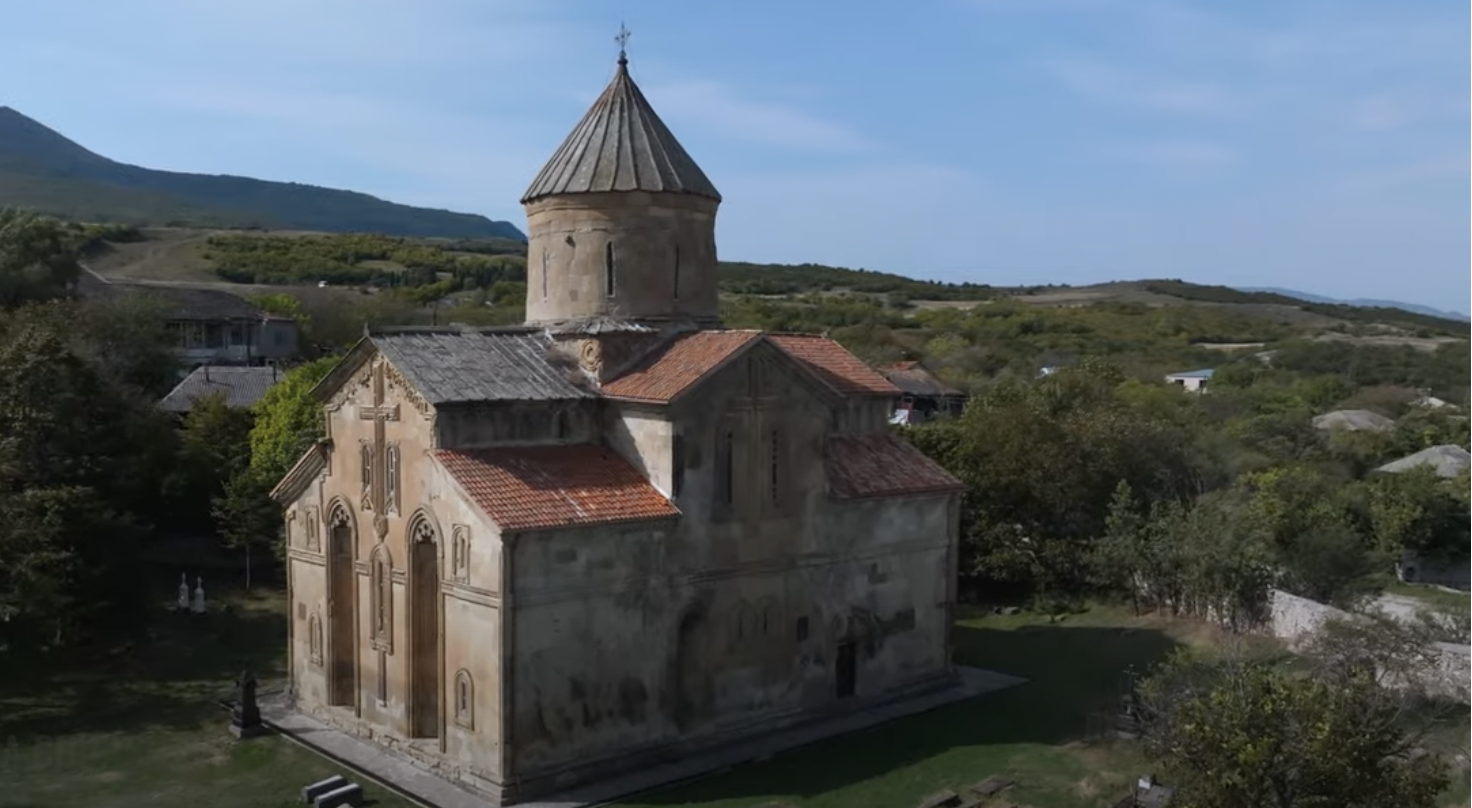
ERTATSMINDA - The architecture of Ertatsminda Church dates from the mid-thirteenth century. It is built of large carefully hewn blocks of yellow sandstone. The building has an inscribed-cross plan, with its dome resting on the corners of the apse wall projections to the east and two piers to the west. Pendentives serve to transition from the square central bay to the circular base of the dome. The Church of St. Eustace stands in the middle of the village of Ertatsminda, within a large courtyard that is encircled by a stone wall. The toponym Ertatsminda derives from Estatetsminda, which in Georgian means St. Eustace. The exterior of the church is richly decorated. All four façades feature framed double windows with large crosses between them, all of which are adorned with stone-carved ornaments.
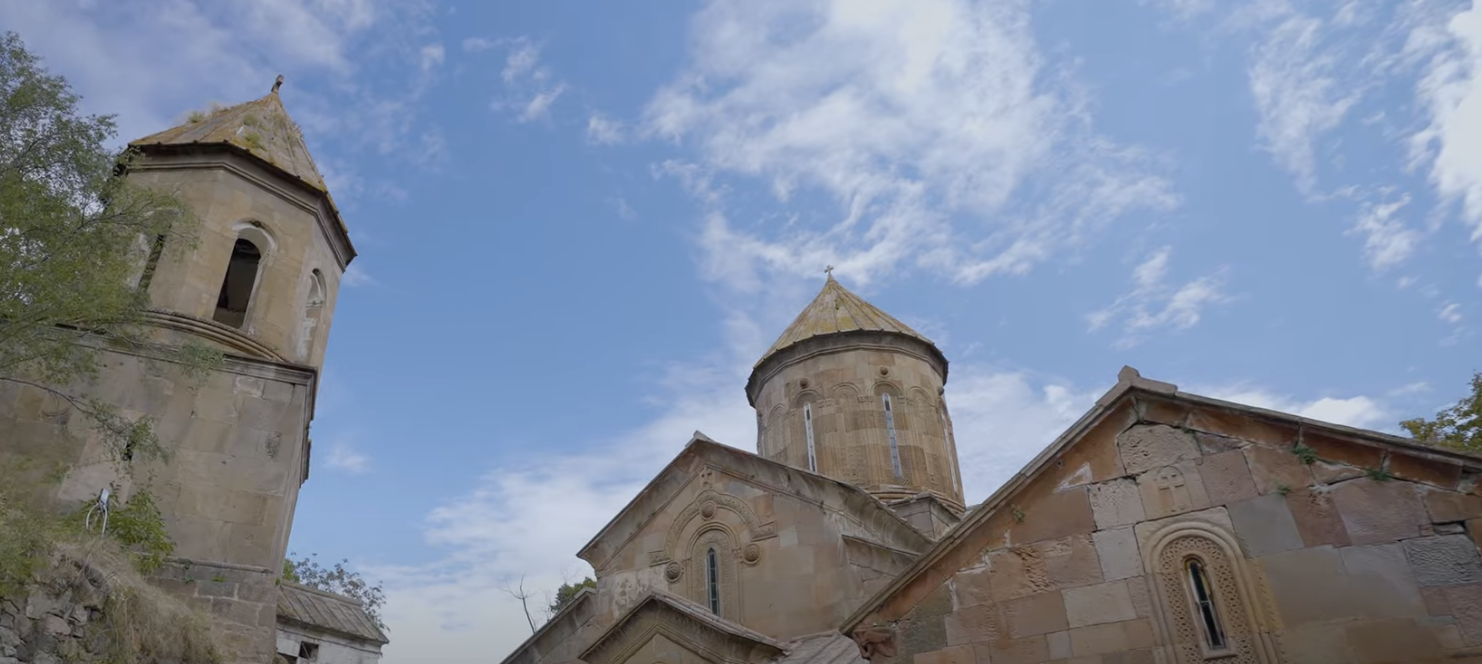
The monastery in Sapara has existed since the 10th century. The single-nave church of the Dormition of the Virgin belongs to this period. From the second half of the 13th century, Sapara became the residence and burial place of the Jakeli: the Rulers (Atabags) of Samtskhe (a historical region of south-western Georgia). Sapara Monastery is located ten kilometers from the city of Akhaltsikhe, quite remote from the settlement.
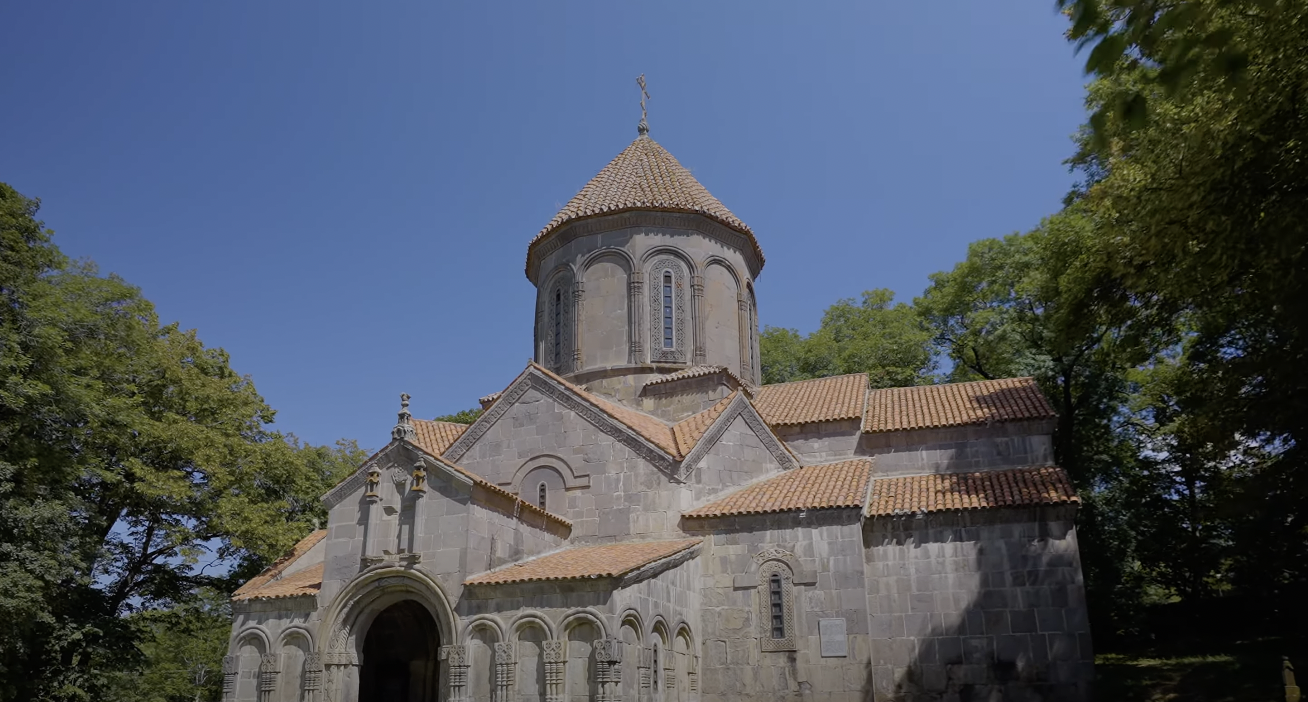
Manglisi is one of the oldest Christian sites in Eastern Georgia. The first church was built at the location in the fourth century, soon after the Kingdom of Iberia had officially adopted Christianity as the state religion in around 330. In the 490s, a new church was constructed in Manglisi. By that time, it was commonly believed that relics which had borne witness to Christ were kept at Manglisi. Their possession made Manglisi the Caucasian-wide center for pilgrimage.

Tsughrughasheni Church is situated 2 kilometers from Bolnisi Sioni Cathedral in Kvemo Kartli Province. The church was built in 1212–1222 supposedly by King George IV Lasha of the Bagrationi Dynasty. Tsughrughasheni Church is a cross-domed building remarkable for its unusually elevated proportions. The dome’s exterior height from the bottom of the drum to the top of the conical roof is two and a half times greater than its diameter, making it look like a tower. This perception of increased height is emphasized not only by the towering dome, but also by the sharply angled gables.

BIENNALE ARCHITETTURA 2023 -Within the framework of 18th International architecture exhibition Georgian project - January, February, March is shown by Tbilisi Architecture Biennial. The project symbolically focuses on water reservoirs, their creation, and their impact in the age of rapid political transformations and climate change. How temporary is our footprint on the environment? When we mention the flows of energy, migration, time, and the outflow of the landscape itself, what flows are we speaking of? Can we consider water as a determinant of order? To what extent can the spatial–political development of humans bring changes in nature and society and vice versa? What physical and conceptual forms fade or remain with such transformations? Are the natural creations – their memory, history, and artifacts – signifying their past life and, above all, considering both the global and local contexts, what is their future? Commissioner: Magda Guruli Curators: Gigi Shukakidze, Tinatin Gurgenidze, Otar Nemsadze Exhibitors: Tbilisi Architecture Biennial 18th International architecture Biennale is curated by academic, educator and best-selling novelist Lesley Lokko and will be on show till Novermber.
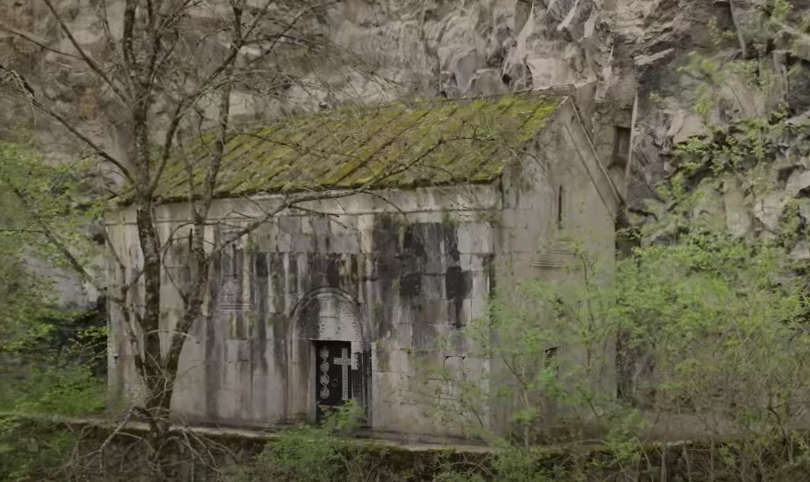
The Church of St. George stands in a thick forest on the edge of Daba village in the historic province of Tori, which has also been referred to as Borjomi Gorge since the nineteenth century. The church is built right up against a steep cliff, and its southern wall is nestled in the concavity of the rock. According to the inscription carved above its western door, the church was built in 1333 by the Chief Treasurer of George V the Illustrious – the last successful King of Georgia, who expelled from the country the invading Mongols and reunited the Georgian Kingdom.

In 1851, the Mauritanian-style building became home to the first opera house in the Caucasus. The opera gained tremendous popularity, but ballet remained relatively unknown to the Georgian public until the arrival of four ballet dancers from St. Petersburg, whose uncanny performance served as an introduction to the genre. The first official premiere of ballet took place on January 18, 1854, two years after the grand opening of the Theater. The present building of tbilisi opera state theatre was constructed from 1880 to 1896 by Viktor Schroeter, a prolific architect from St-Petersbourg. He designed the Tbilisi Opera House in Neo-Moorish style, which spread across Europe and America in the latter half of the nineteenth century. The curtain for Tbilisi Opera House was created by Sergo Kobuladze (1954-56, 1961).

Dmanisi is a snapshot in time, like a time capsule that preserves an ecosystem 1.8Ma ago. The Dmanisi site combines unique traces of different archeological periods. The site is rich in medieval and Bronze Age artifacts, but it is the wealth of paleolithic finds that have put it on the scientific map. The Village of Dmanisi lies 85 kilometers southwest of the Georgian Capital of Tbilisi. In the Middle Ages, Dmanisi was one of the most prominent cities and an important stop along the old Silk Road.
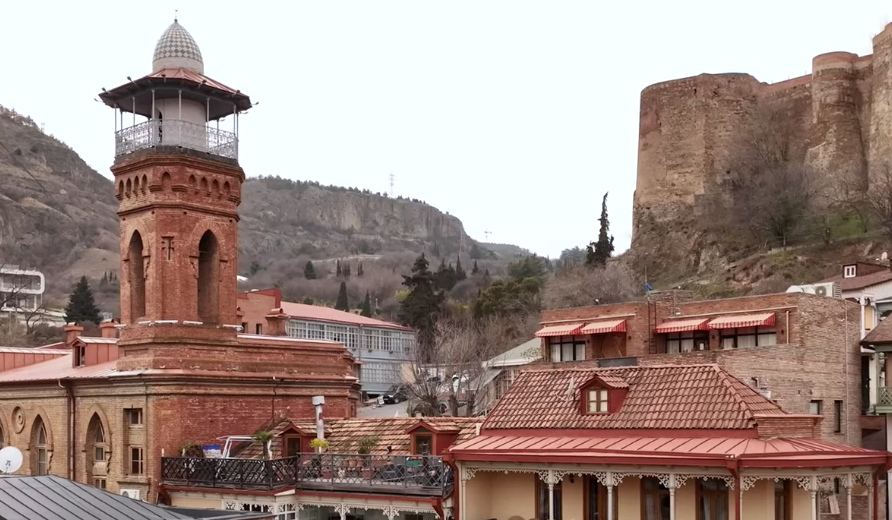
Tbilisi’s Muslim population appeared after the conquest of the city by Arabs in the early VII century. Several mosques were erected in Tbilisi during the Middle Ages. The largest among them was the Shi’a mosque that stood on the right bank of the Mtkvari, close to the river. According to oral tradition, it was built by Shah Ismail I of Iran, who invaded Georgia and occupied Tbilisi from 1522 to 1524.

TSROMI Church - The church in Tsromi is one of the most important early medieval buildings in Georgia, from both architectural and historical points of view. According to tradition, the church was erected at the place where St. Razhden the Protomartyr, a fifth-century Iranian convert to Christianity, was executed. The first church at the location of St Razhden’s martyrdom in Tsromi was most probably built in the late fifth century.
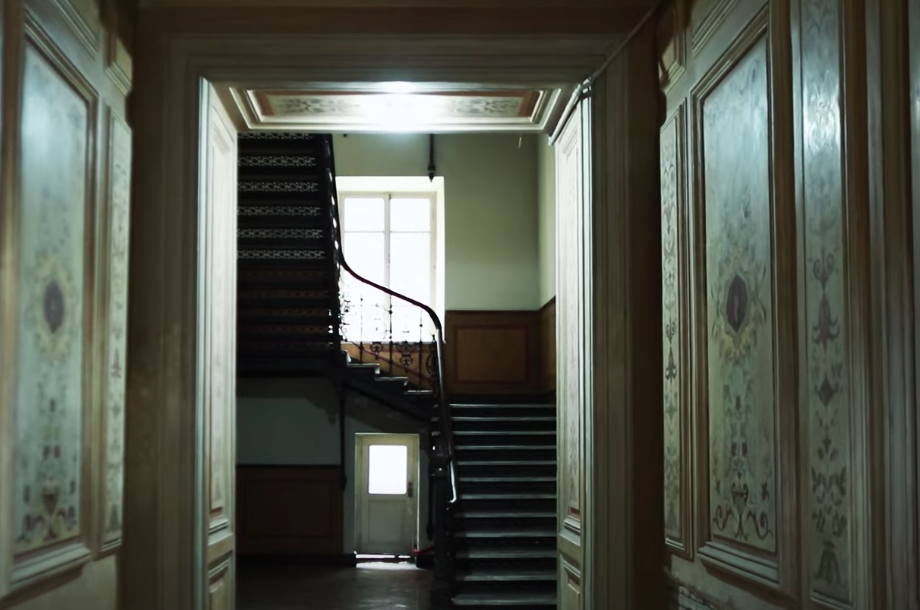
A trip through the Impressive Architectural Landmarks in Tbilisi - Aghmashenebeli Avenue, Machabeli Street, Sololaki, Vera. The diversity of Tbilisi’s architecture was revealed from the second half of the 19th century and the early 20th century. Cosmopolitan style met local traditions in Tbilisi, and this international artistic language of forms and themes merged with a clear national tradition.
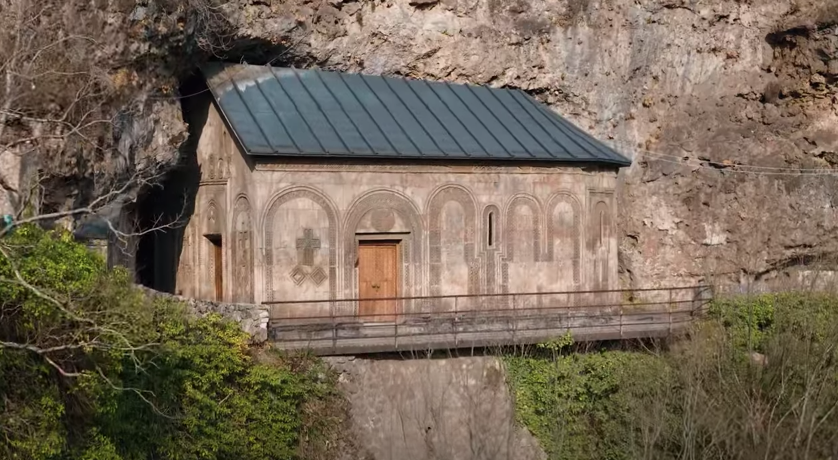
The Church of the Savior of Mghvimevi, which dates from the 1270s, stands on a steep cliff face high above the road in a suburb of the city of Chiatura in Imereti. It is built in front of a natural cave, and is partly sheltered by a large overhanging steep ledge of rock (the name of the place derives from Mghvime, which means cave in Georgian).

Lado Alexi-Meshkhishvili (1915-1978) is one of the most outstanding architects, whose creative work has left a significant mark on Georgia, particularly in Tbilisi. Though Lado Alexi-Meskhishvili had to work in two completely different stylistic and ideological periods, all of his works are characterized by their simplicity, subtlety, and lack of excessive decoration and overload of details. Even though his projects share some common features, they are all unique.

Ateni Sioni is Georgian Orthodox church features 4 apses with 4 niches & Nuskhuri inscriptions. The first church was constructed at the site as early as the fifth century. Archaeological studies have revealed that it must have been a large basilica. The majority of the substructure was also built during that period. Ateni is located in Shida Kartli province, 15 km from the town of Gori. The church known as Sioni (i. e. Zion) stands on a giant artificial platform constructed atop a cliff at a bend in the Tana River gorge.
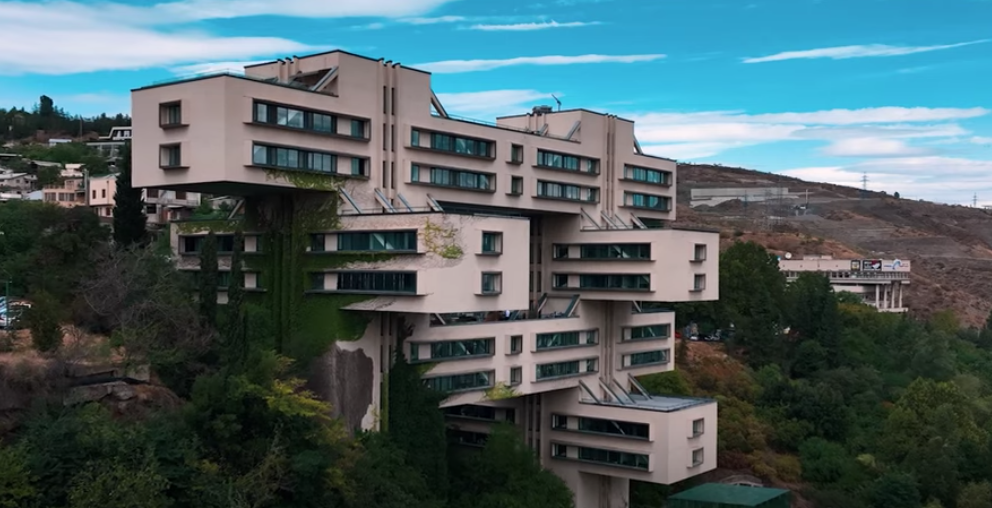
The building of the former Ministry of Highway Construction in Georgia, which is currently the @bankofgeorgia Headquarters. Architect Giorgi Chakhava was appointed to the post of Deputy Minister of Highways in 1969, and served as both the customer and executor of the project. He chose the site himself, with the intention of making the building prominent and noticeable to people as they were entering and leaving the city. Today, this building serves as an advertisement for Georgia on the world map of twentieth-century architecture. Architects: Giorgi Chakhava, Zurab Jalaghania Designers: Alexander Kimberg, Teimuraz Tkhilava Design Institute: “Gipropromselstroy” until 1970, later the 3rd architectural studio of Tbilzniyep Project development period: 1967-1970 Building construction period: 1972-1975
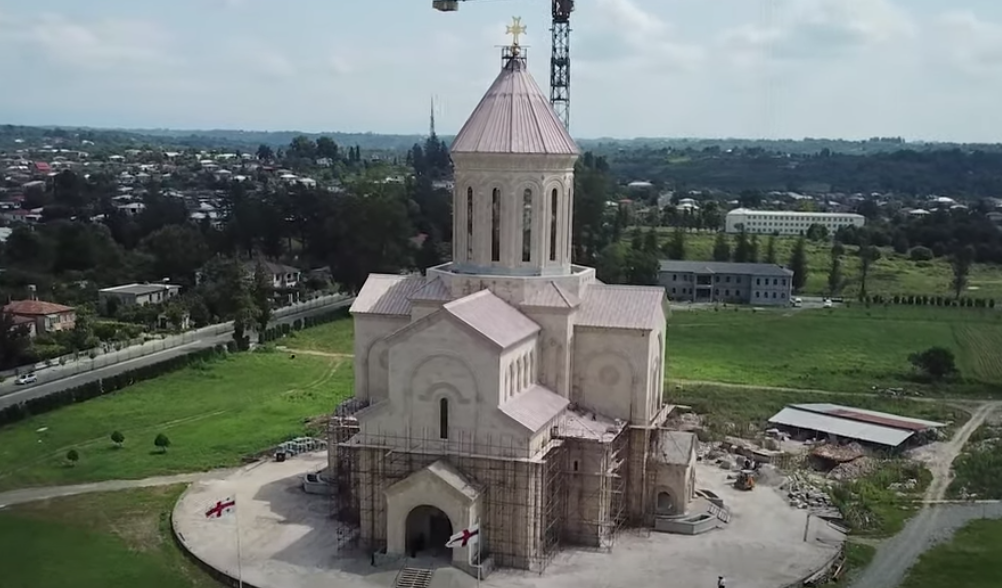
he Temple of the Iverian All Holy Mother of God Icon in Samegrelo, Zugdidi. This cathedral is an outstanding example of modern church architecture. The building is located in the center of Zugdidi. Construction began in 2009 with the blessing of the Catholicos-Patriarch of All Georgia, Ilia II, and continues to this day. Not one of the ornaments adorning the temple’s facade is repeated. Mosaics will be created to decorate the interior. In addition, a complex is also being built that is to become a center of religious and cultural education. Archil Mindiashvili is the chief architect of the cathedral. As a result of its architectural and spiritual significance, the All-Holy Mother of God Cathedral of Iveria will become one of the principal monuments in Georgia’s cultural heritage.
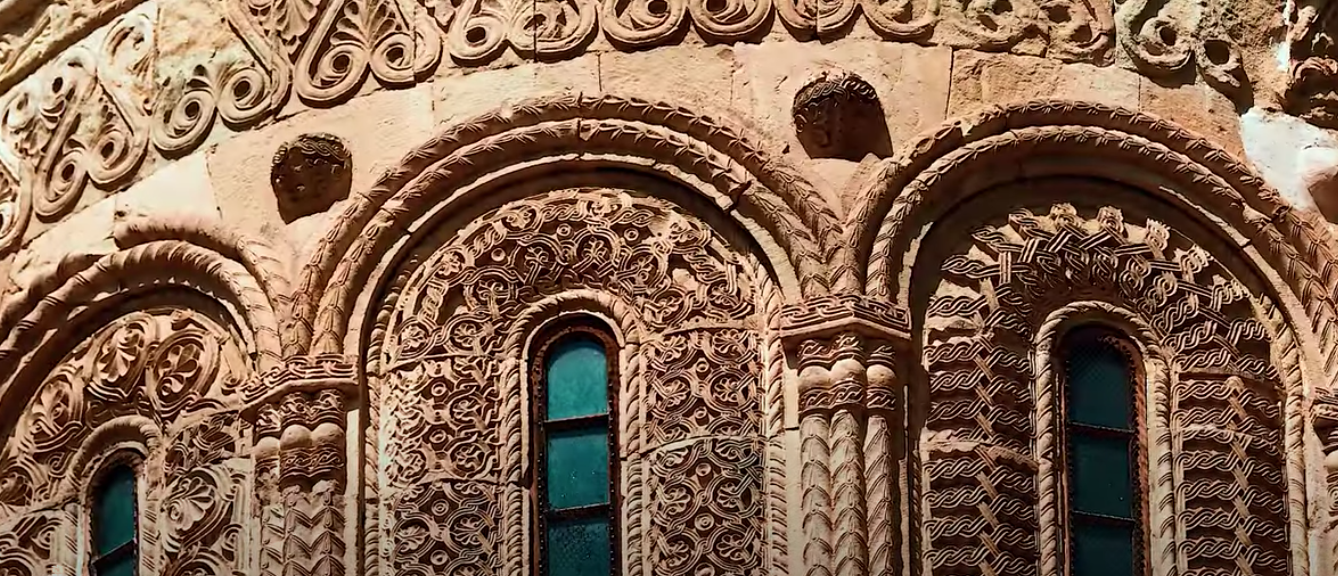
Kvatakhevi Monastery is located in the province of Shida Kartli, deep in the Kavtura River Gorge. The main church of the monastery, which is dedicated to the Mother of God, was built around 1200 and is considered to represent one of the best examples of Georgian architecture from the Epoch of Queen Tamar.
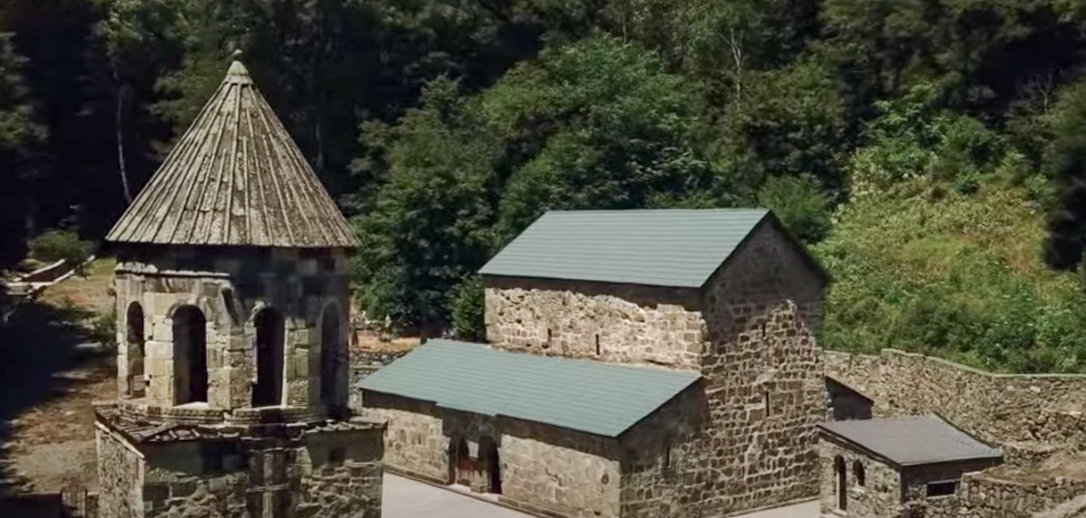
hitakhevi Monastery, which is popularly known as the Green Monastery, is located 15 km from the spa town of Borjomi. Its foundation is associated with two disciples of the great spiritual leader St. Gregory of Khandzta, Theodore and Christophore, and their arrival in the Borjomi Gorge (historical province of Tori) in the 830s. The monks established two monasteries: in Nedzvi and Kviriketsminda. These foundations soon grew into branches, one of which was situated in Chitakhevi.

MARTQOPI MONASTERY dates back to the mid-sixth century when St. Anton, one of a group of monks known as the “Thirteen Syrian Fathers,” settled here. According to tradition, he lived on top of a pillar, thus following the Syrian practice of Stylitism. Soon a community of monks had gathered around him, which led to the foundation of a monastery that was subsequently named Martqopi (shortened from “Martodmqopi” – literally "one living in solitude," a hermit). Monastery is located about 25 km east of Tbilisi.

ANCHISKHATI - The Church of the Nativity of the Virgin, which is located in Zemo (Upper) Kala District and known as Anchiskhati, is the oldest preserved church in Tbilisi. Its plan, architectural design, and building technique suggest a date in the early Christian period. Seemingly, a note in the Georgian chronicle that mentions King Dachi of Iberia (ca 502-514) building St Mary's Church in Tbilisi refers to this church. The interior of the church is covered with murals painted in 1683 by order of Catholicos Nicholas VI, and in 1813 at the request of Dean Dimitri Aleksi-Meskhishvili.

Ivane Javakhishvili Tbilisi State University is a public research university established on 8 February 1918 in Tbilisi, Georgia. TSU is the oldest university in Georgia and the Caucasus region. The university has five branches in the regions of Georgia, six faculties, 60 scientific-research laboratories and centers, a scientific library, seven museums and publishing house. The main founder of the university was a Georgian historian and academician, Ivane Javakhishvili. Among the co-founders were also several scientists, including Giorgi Akhvlediani, Shalva Nutsubidze, Dimitri Uznadze, Grigol Tsereteli, Akaki Shanidze, Andrea Razmadze, Korneli Kekelidze, Ioseb Kipshidze, Petre Melikishvili and Ekvtime Takaishvili. Professor Petre Melikishvili, a Georgian chemist, became the first rector of TSU.
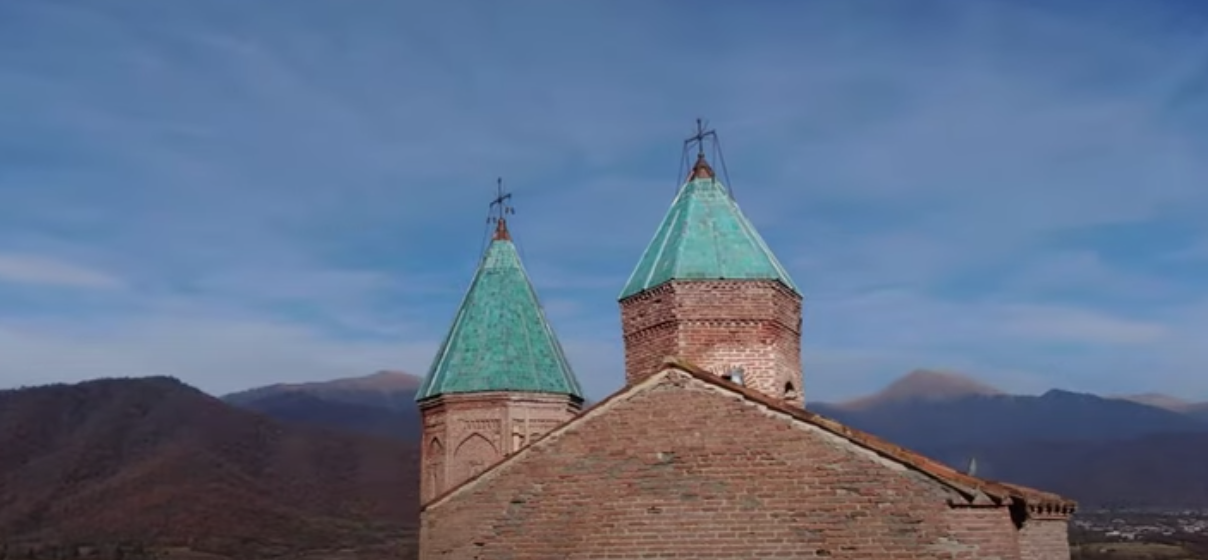
Gremi is the former capital of the Kingdom of Kakheti. Its archaeological site includes a citadel, a royal quarter, and a trade district. The Church of the Archangels in the citadel was built by King Levan in 1565. It is one of the best examples of sixteenth-century Georgian architecture.

GONIO FORTRESS stands on flatlands near the sea coast, and during the Roman period it was directly linked to a harbour in order to secure safe navigation. Exact date of its foundation is unknown, but it is believed to have been built in the first century AD, and restored in the fourth and sixth centuries. According to Georgian Orthodox Church tradition, the tomb of St Matthias (the apostle chosen to replace Judas Iscariot) is located in Gonio. Music by Erekle Getsadze
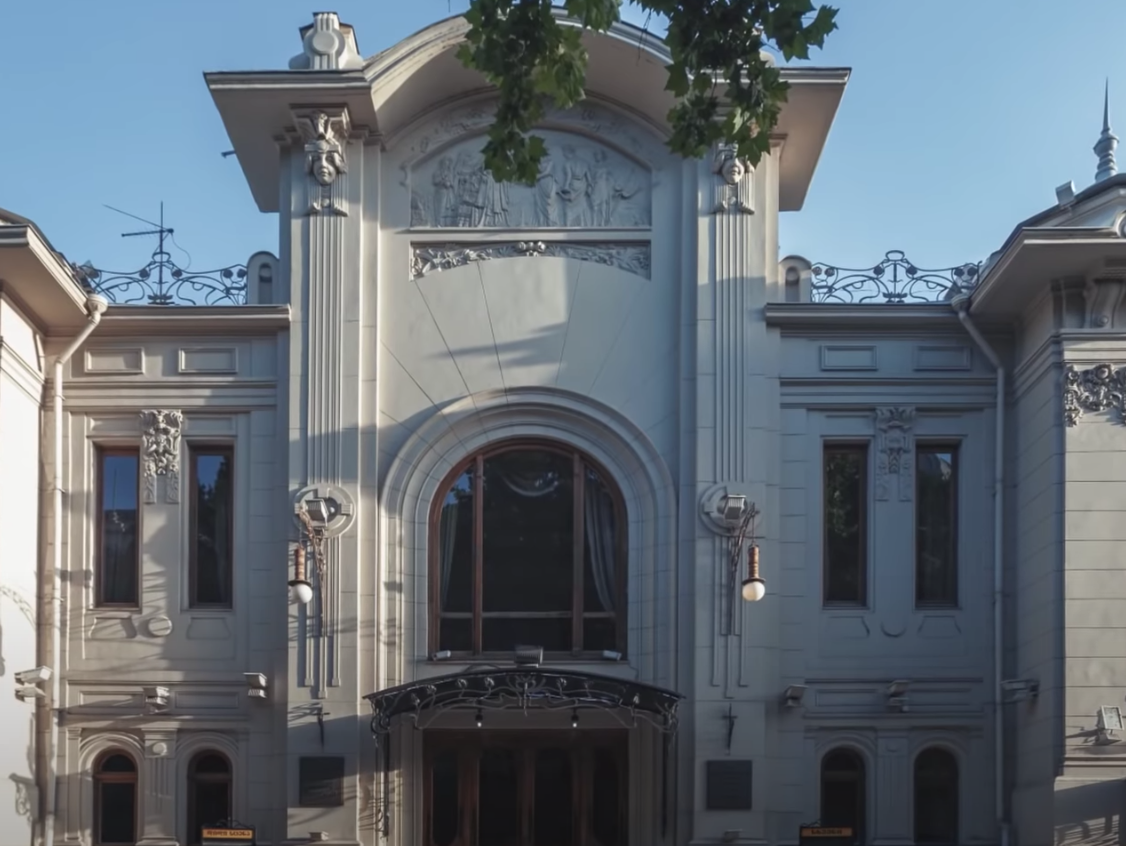
Learn more about the rich history behind the Marjanishvili Theatre building. Presented by David Khoshtaria / Architectural historian Music by Erekle Getsadze
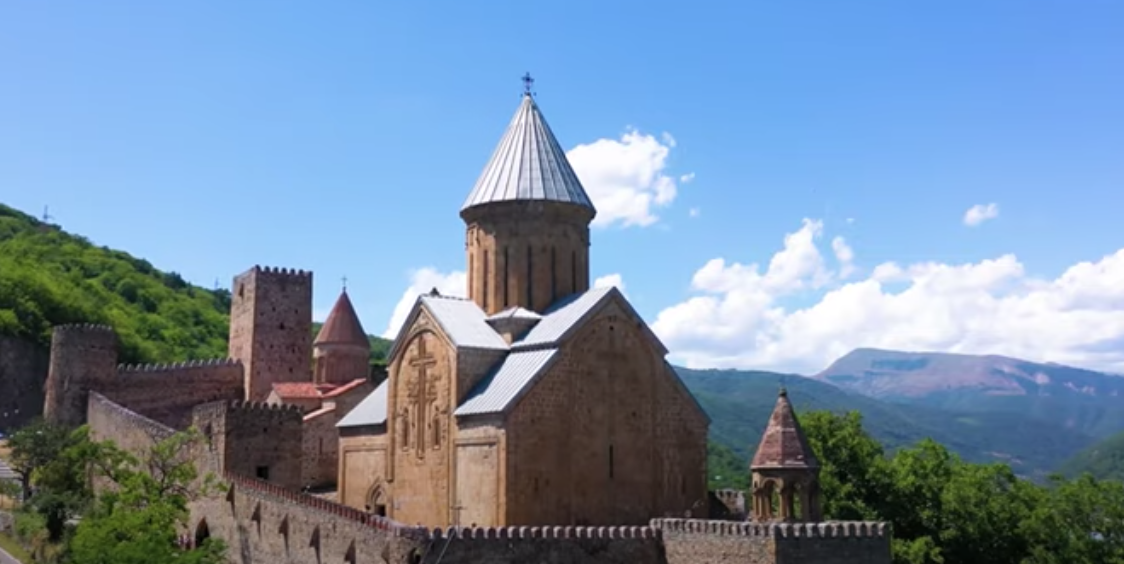
Ananuri is a picturesque castle located in the Aragvi Gorge. Looking out over the foothills to the plain beyond, the castle is a notable landmark along the historic road that connects Georgia to the North Caucasus.

Building number eight on Marjanishvili Street in Tbilisi, which presently houses the Kote Marjanishvili State Academic Drama Theatre, was constructed between 1902 and 1907 according to the design of architect Stefan Kryczyński, and under the supervision of architect Aleksander Rogojski. Learn more about the rich history behind Marjanishvili Theatre building. Presented by Art Historian - David Khoshtaria
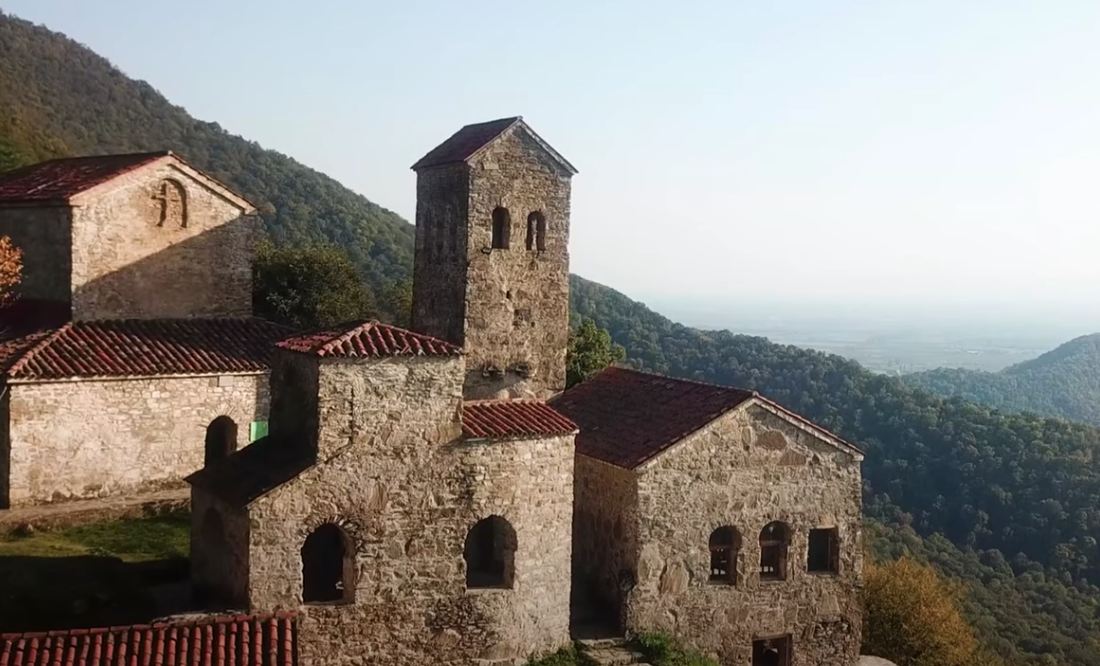
The Nekresi monastery located in the eastern Georgian region of Kakheti, founded in the 6th century.
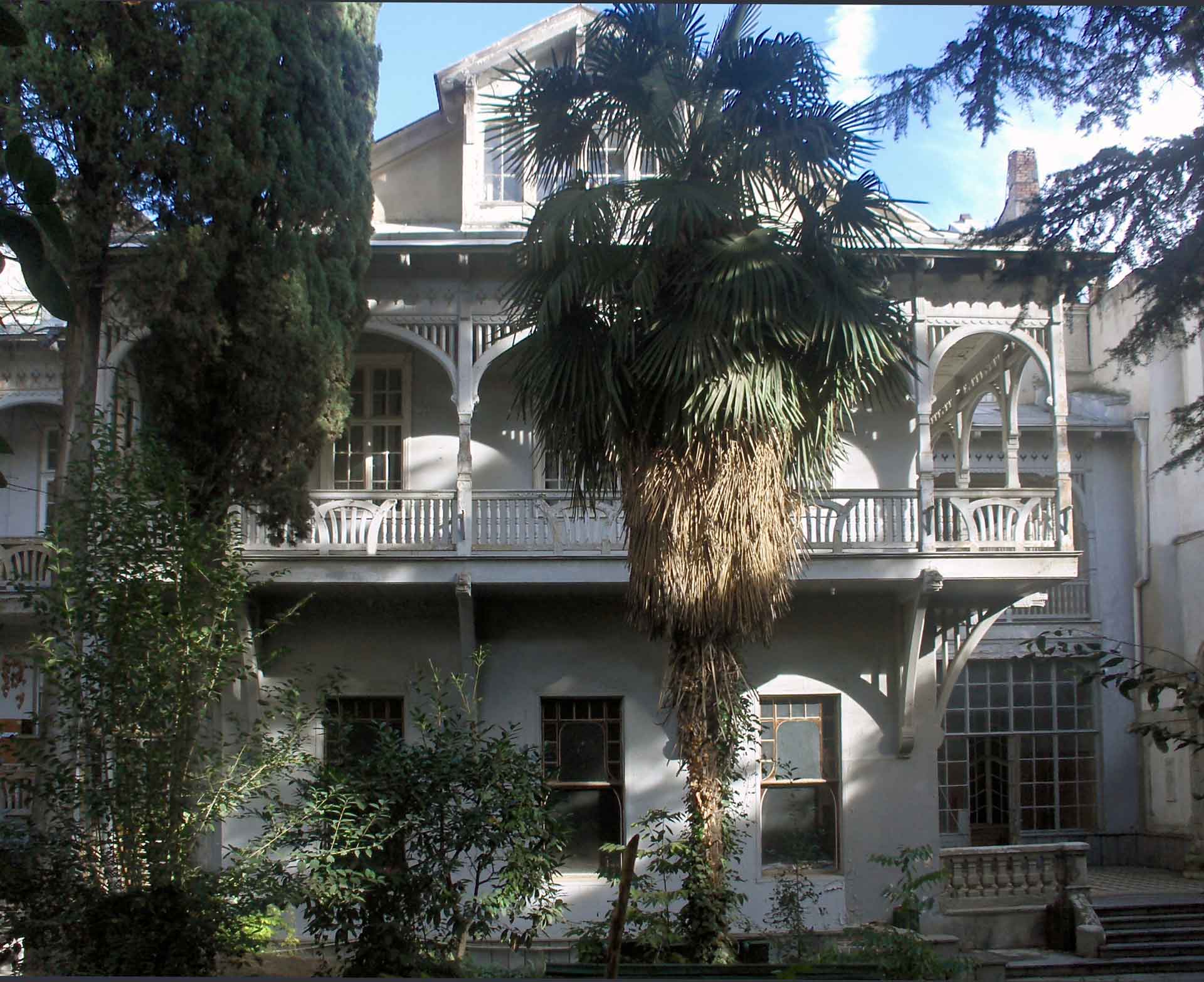
House number thirteen on Machabeli Street in Tbilisi is distinguished both for its history and its architecture. It originally belonged to the famous Georgian brandy producer David Sarajishvili, renowned not only for his prosperous entrepreneurship, but also for his philanthropy.

Located on Aghmashenebeli Avenue (former Plekhanovi) in the old German neighborhood, the Apollo is one of the city’s distinguished works of modernism. It is now on the country’s list of cultural heritage.
.jpg)
The church of the Virgin at Timotesubani is located on the bank of the River Toristskali in the picturesque Borjomi gorge, not far from the town of Borjomi itself in the historic region of Tori.
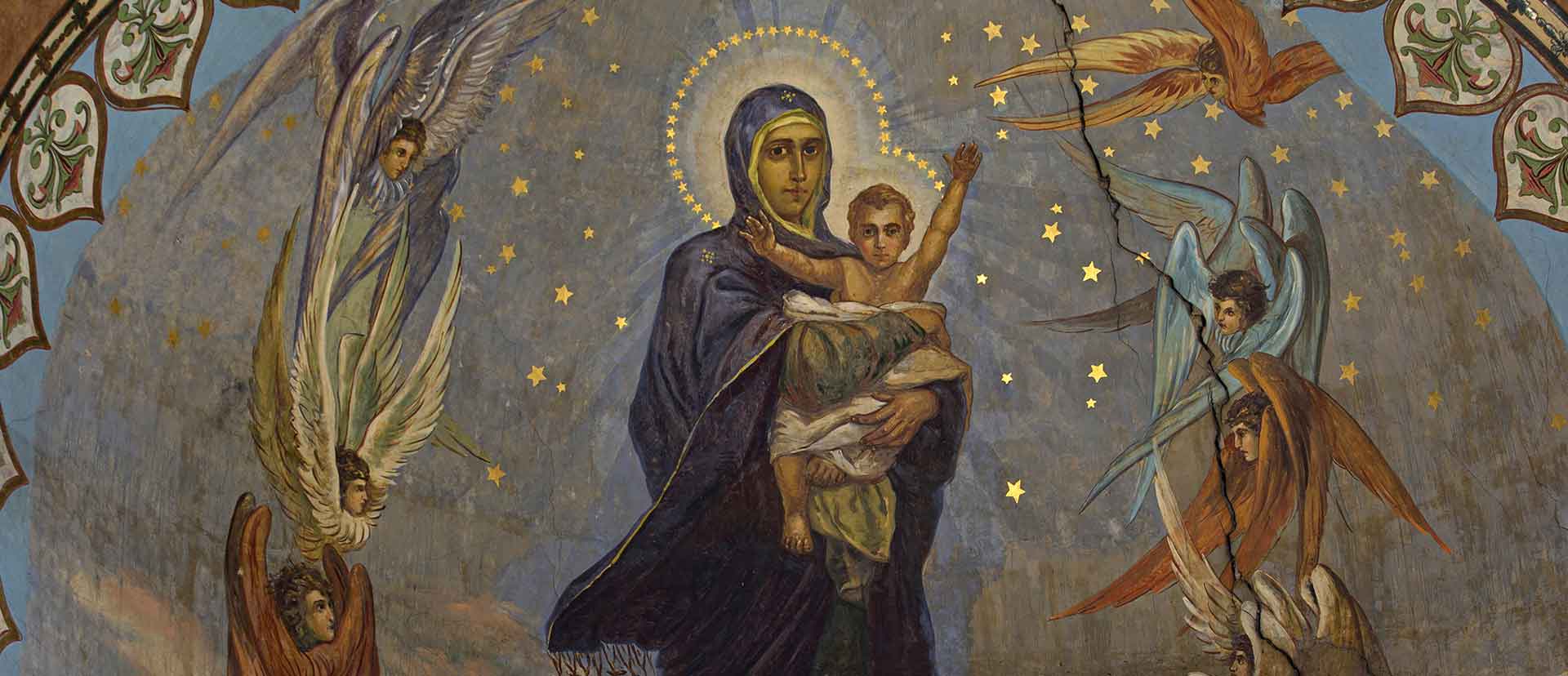
“Shiomghvime Monastery is set among the mountains in a picturesque ravine, 10 km west of Mtskheta. Its history dates back to the mid-sixth century when St. Shio, from the group of monks known as the “thirteen Syrian Fathers,” settled here. Several years later a community of monks gathered around him, which led to the foundation of a monastery. St. Shio himself continued to live nearby, but spent the last two years of his life and was ultimately buried in a dark cave located in the middle of the monastery, which was subsequently named Shiomghvime ("the Cave of Shio”)”.

Among numerous archeological discoveries made in Georgia over recent years, the Grakliani Hill find has attracted special attention Although it has only been 12 years since archaeologists appeared here, 11 different periods of human activity have already been established, beginning from the Old Stone Age (about 1,500,000 - 1,800,000 years ago) up to the fourth century AD. Within this very extensive timeframe, two periods draw particular attention: the V-IV centuries BC and the X century BC.
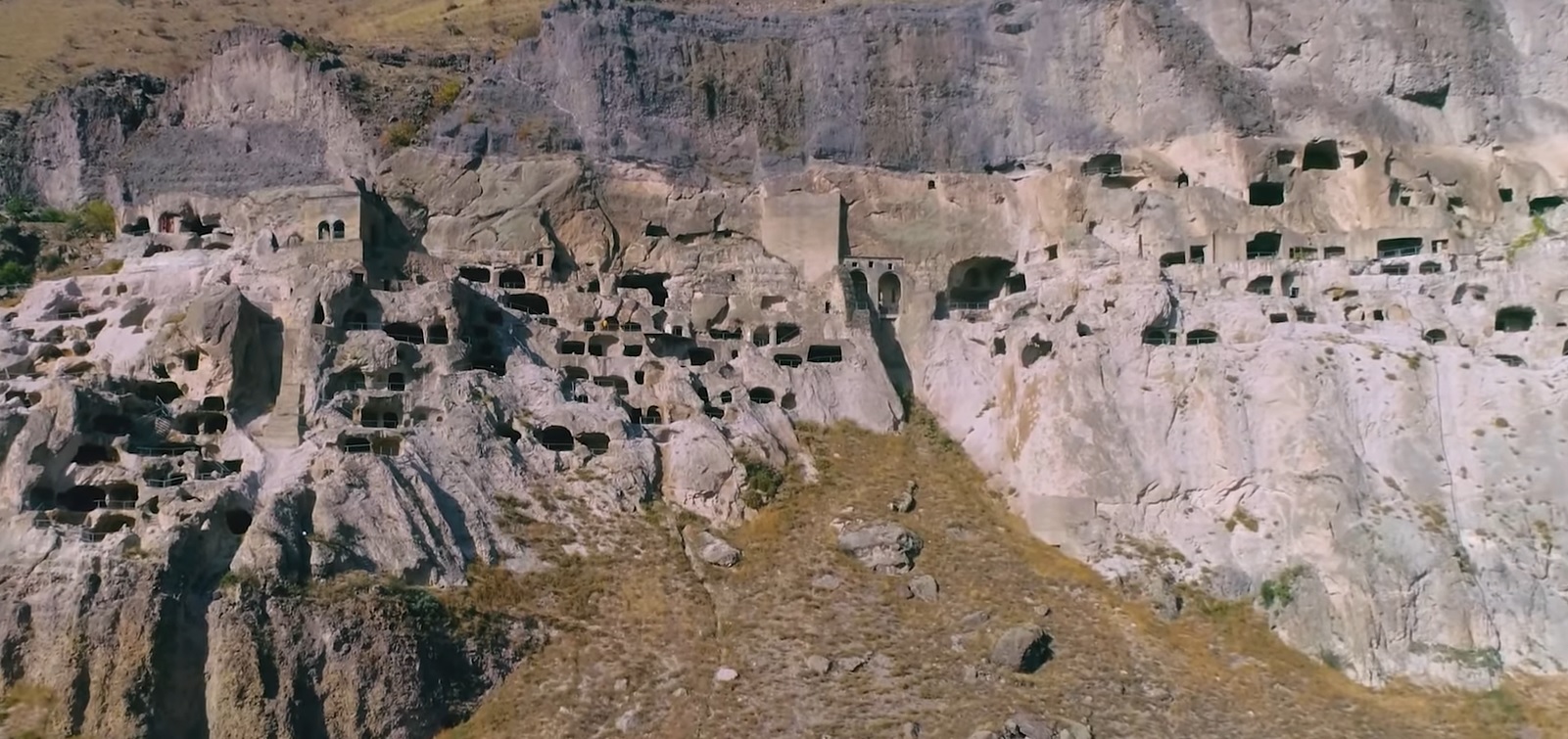
Vardzia’s rock-hewn architectural ensemble is situated in historic Meskheti, South Georgia, on the left bank of the river Mtkvari. It served as fortification, as well as religious and habitation purposes, and has outstanding artistic and historical significance.
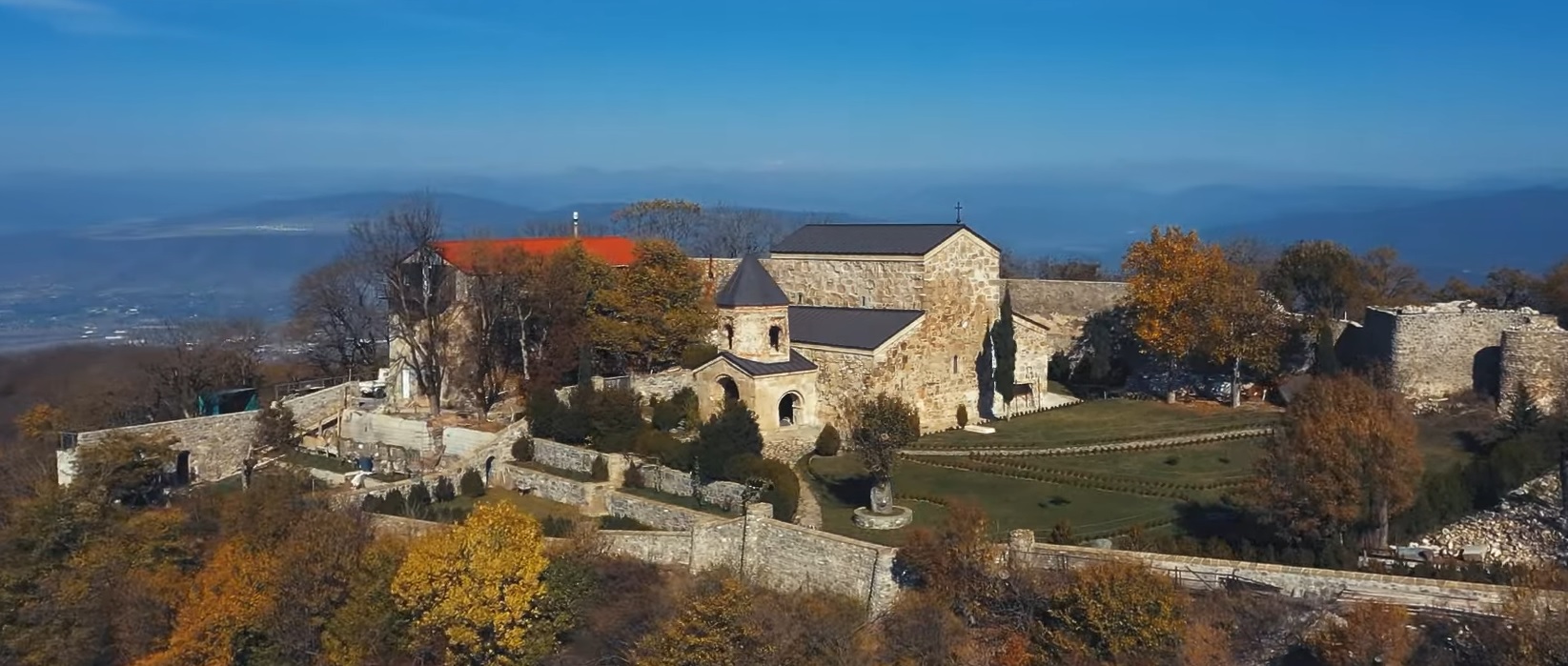
Zedazeni is one of the oldest Georgian monasteries. Its history dates back to the 510s, when St. John of Zedazeni, leader of the group of monks known as the “thirteen Syrian Fathers,” secluded himself on the summit of Mount Zeda Zadeni.
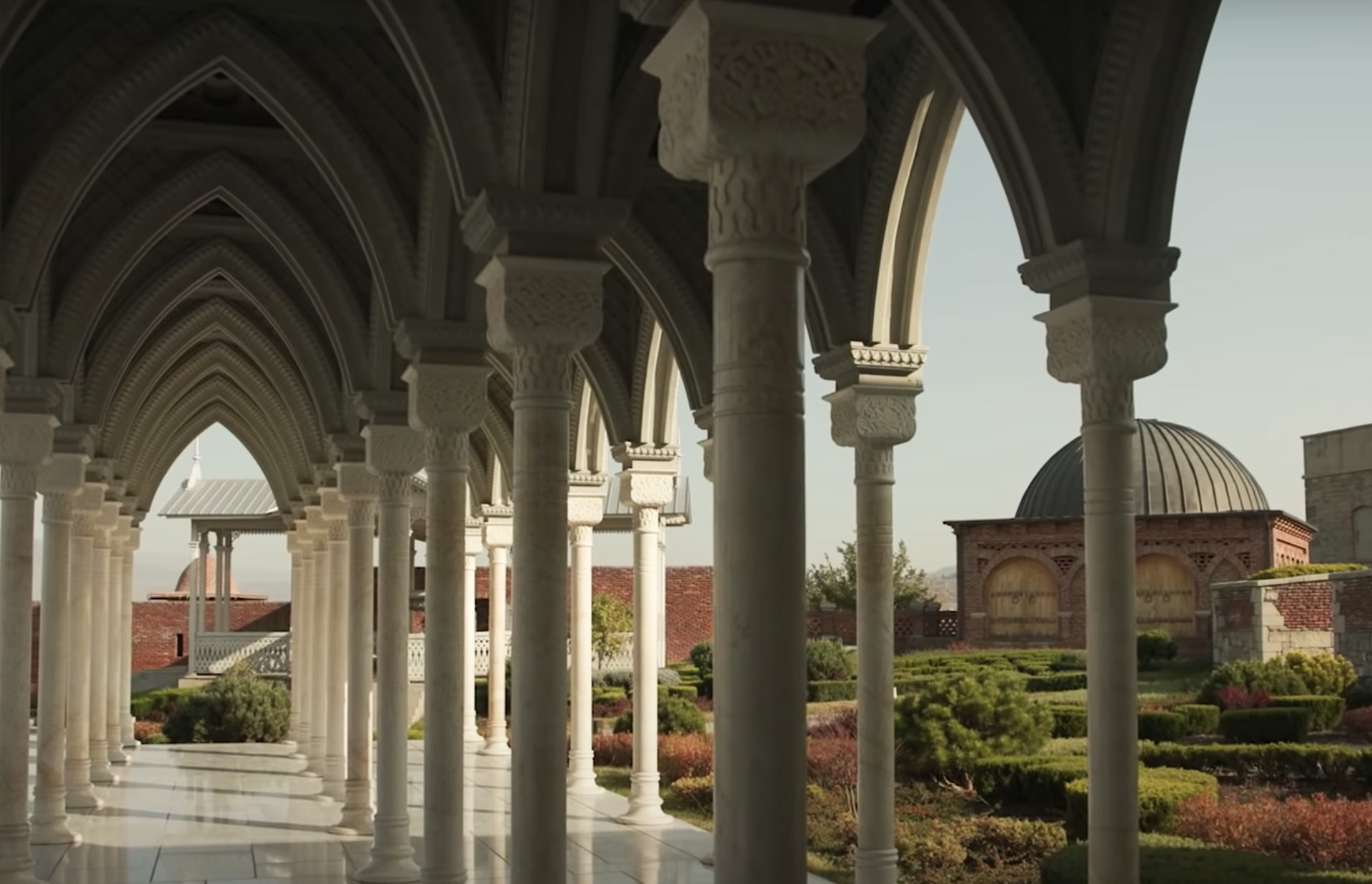
Rabat Fortress in Akhaltsikhe - Akhaltsikhe is one of the oldest Georgian cities known from written sources since the twelfth century. Being an important military stronghold and a regional political centre, it always attracted the attention of the neighbouring powers aiming at domination over the South Caucasus.

Tbilisi Architecture Biennial, conceived under the name “What Do We Have in Common''. This way, the event transformed itself into a "Common Architecture Biennial", emerging from Tbilisi but attempting to propagate the concept of "togetherness" far beyond Tbilisi and Georgia's borders. Purpose of the projects has a far-reaching significance that will resonate in the future.
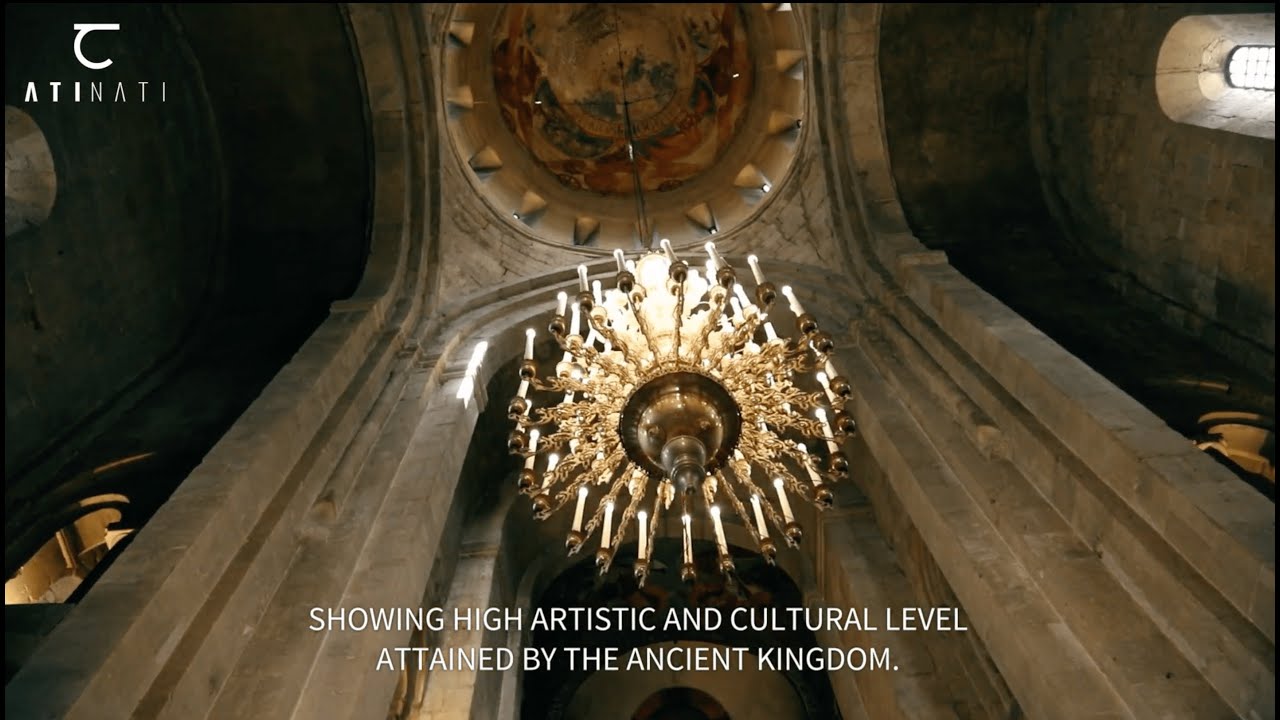
The Historical Monuments of Mtskheta were inscribed on the World Heritage List in 1994. The property consists of the Jvari Monastery, the Svetitstkhoveli Cathedral and the Samtavro Monastery. Major archaeological remains bearing witness to the high level of art and culture of Georgia over four millennia. • The complex of the Svetitskhoveli Cathedral (Literally, the Living Pillar Cathedral) in the centre of the town includes the cathedral church, the palace and the gates. • Samtavro Monastery was originally built in the 4th century and has since been subject to various restorations. The main church of the monastery was built in the early 11th century. It contains the grave of Mirian III, the king of Iberia who established Christianity as the official religion in Georgia.
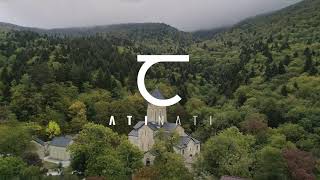
The Kintsvissi monastery is located in Kartli region, in the Dzama River Valley. St. Nicholas church, a cross-dome brick construction, was commissioned by Antoni Glonistavisdze, Archbishop of Tshkondidi and Mtsignobartukhutsesi (the chancellor) of Queen Tamar, in the early 13th c. in the most brilliant epoch of the Georgian statehood and culture, in the reign of Queen Tamar (late 12th - early 13th cc.).